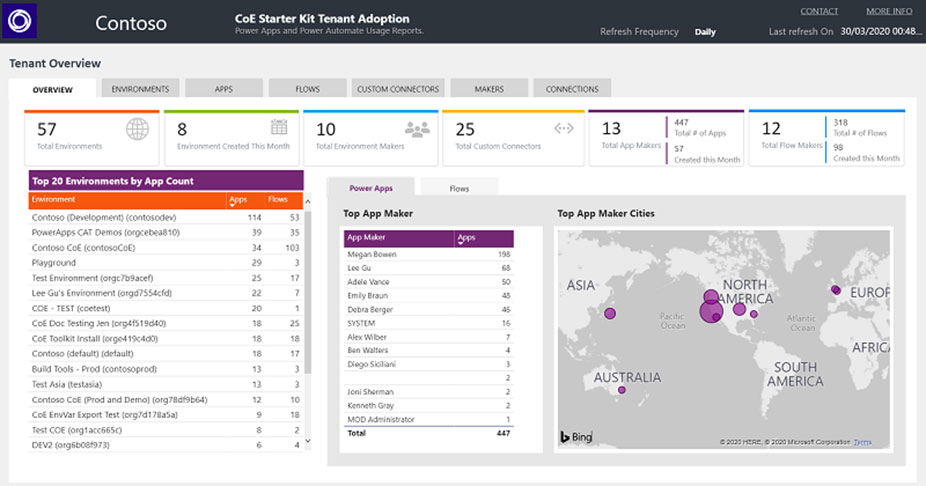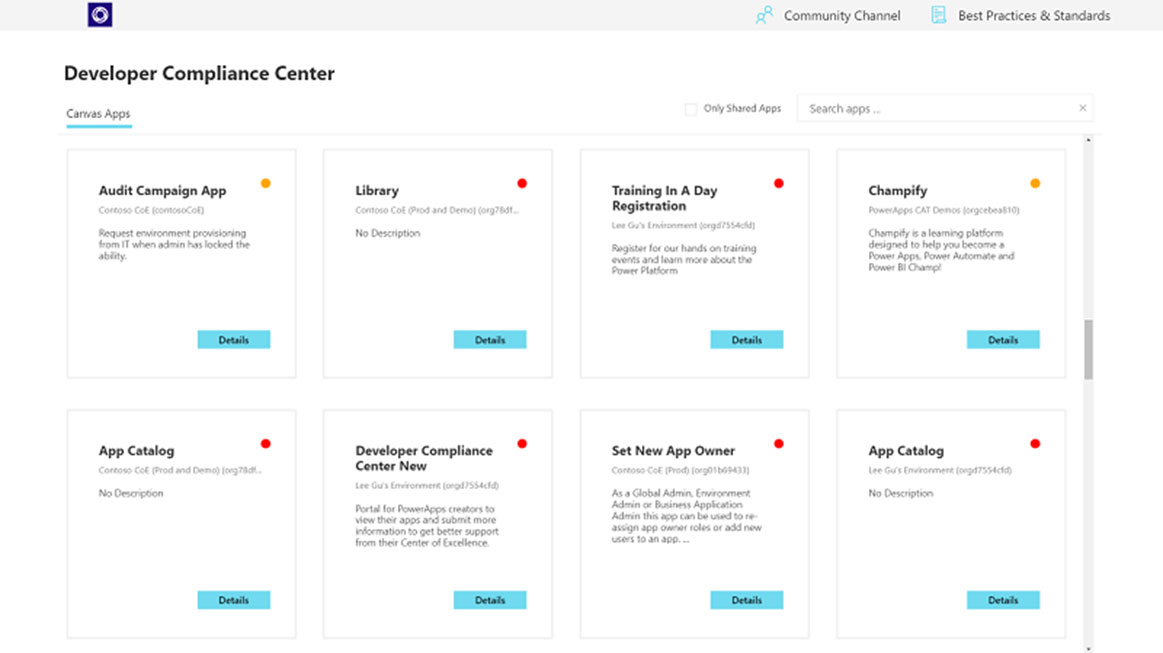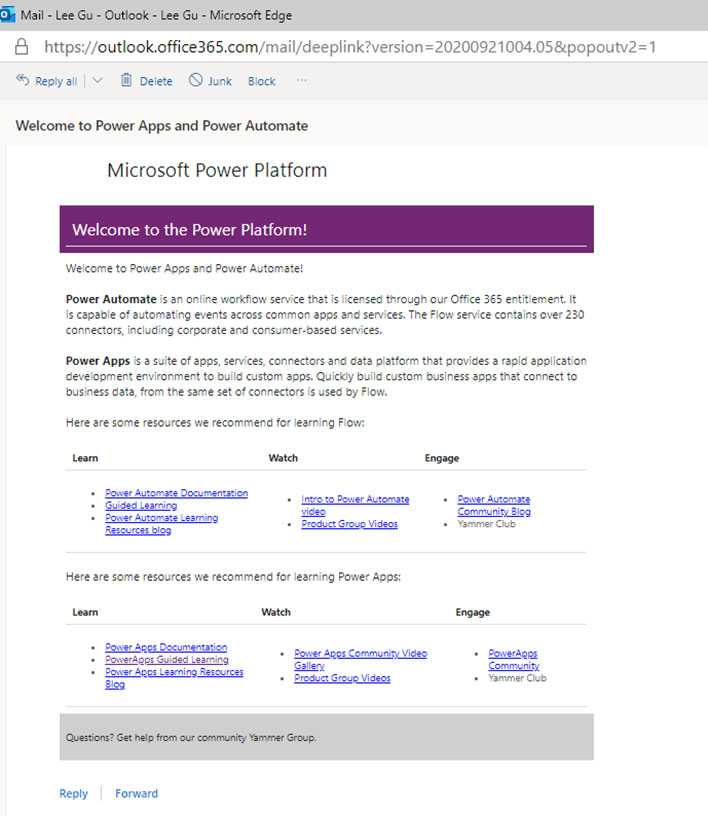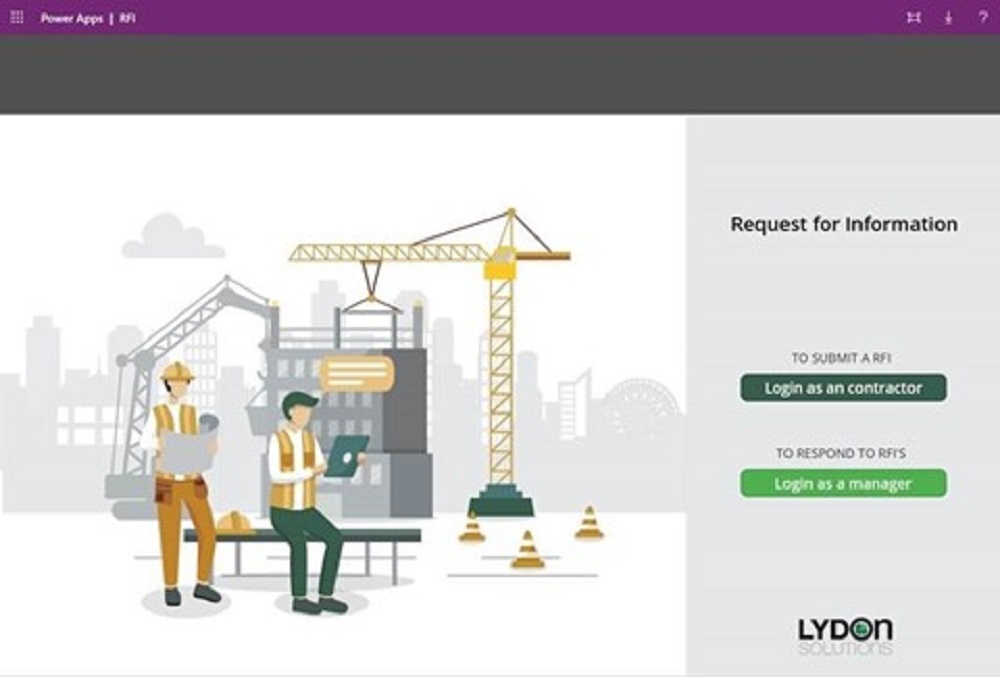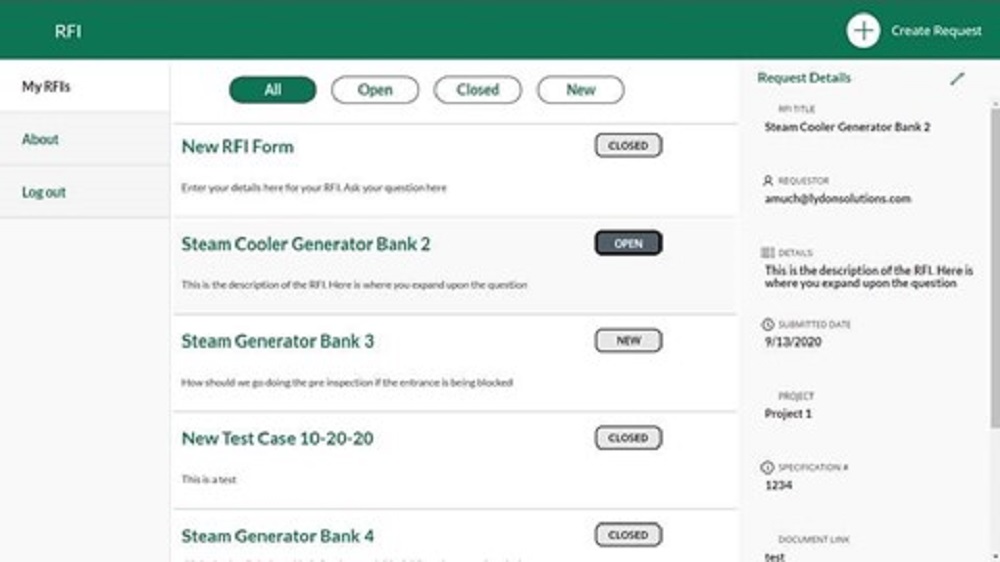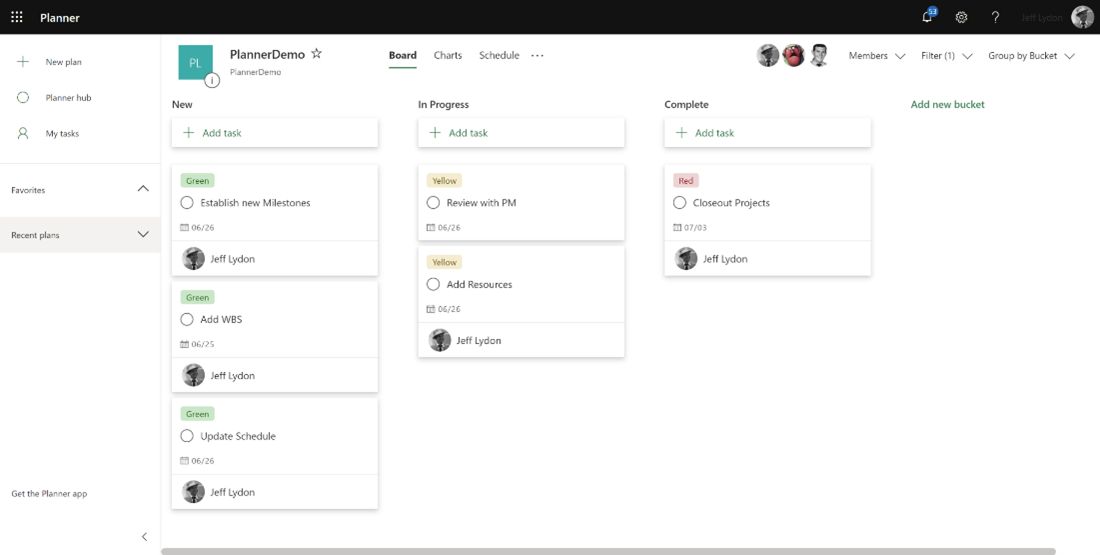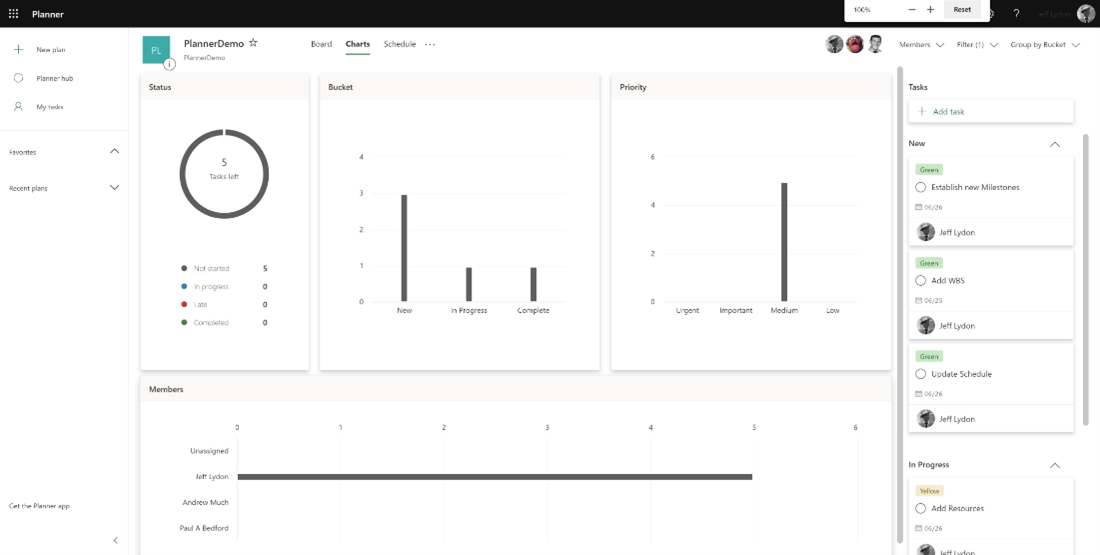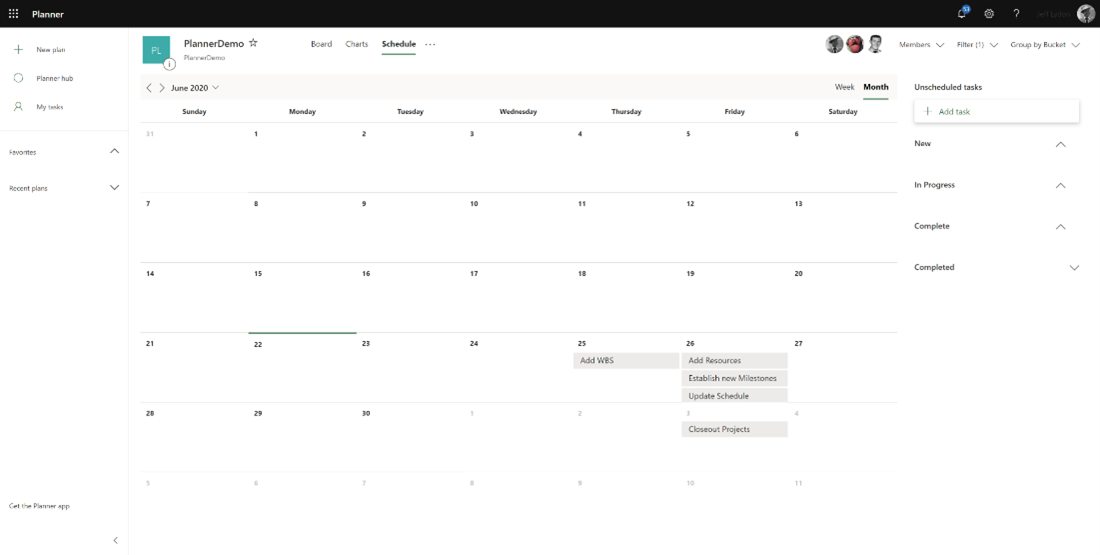The Microsoft Power Platform application suite gives Microsoft 365 users a powerful platform for reporting, workflow, and form creation. Initially introduced in 2017 and significantly enhanced over time, Power Platform is arguably one of the most robust business automation tools on the market. As the adoption of Power Platform exponentially increases, companies need a way to scale solutions, enforce standards, develop and provide training, and maintain a centralized standard set of tools across the enterprise. In other words, organizations need a Power Platform Center of Excellence (CoE) to get the most out of these powerful tools while avoiding costly pitfalls.
What is the Microsoft Power Platform?
The Microsoft Power Platform, available as part of Microsoft 365, combines tools like Power BI, Power Automate, and Power Apps to let organizations build end-to-end business solutions. You can use the platform to analyze data, automate processes, create virtual agents, and more. Power Apps and Power Automate have achieved widespread adoption by giving power users configurable tools to automate company business processes integrating data from various sources. And since Power Platform is a "low code" solution, all of this is possible with little to no coding whatsoever.
Why It's Critical to Create a Center of Excellence for the Power Platform
Creating a Power Platform CoE is an essential coordinating function that puts the “guard rails” around this technology and ensures that change initiatives are delivered consistently through standard processes by a competent and experienced team. Microsoft makes it very easy for users to jump in and start creating Power Platform solutions quickly, so applying control and governance is critical to avoiding ‘the wild west’ springing up in your tenant. Without a CoE, companies risk data exposure to outside entities, inability to report data, unsupported and outdated solutions, inconsistent data, and rework that can result in thousands, if not millions, in costs to organizations.
What to Include in Your Center of Excellence for Power Platform
Here are a few things to consider when setting up a Power Platform CoE:
- Leverage the Power Platform Administration Portal as a critical part of your CoE.
- Make sure to use separate environments for development and testing versus production and ensure your solutions run in the most appropriate region for your users. You can also get a trial subscription to test if you have not committed to the platform.
- Use analytics to understand how apps and flows created in Power Platform run and perform in your environment. Review errors, be sure to monitor what systems these tools connect to, and audit who has access to your solutions.
- Manage data policies to ensure compliance and control how your solutions access data.
- Ensure there is a process for users to submit and you to manage support ticket requests.
As you start your Power Platform journey, work to establish tools and processes that will help nurture your internal development and user community:
- Create a dedicated place to help onboard new users and makers that quickly orients them in the Power Platform universe.
- Create resource pages to share best practices, templates.
- Encourage the sharing of common and reusable assets across your team.
Need Help Creating a Center of Excellence for Power Platform?
A Microsoft Power Platform CoE should ideally balance investing in and nurturing organic growth while maintaining governance and control. At Lydon Solutions, we partner with your organization to stand up a CoE designed to drive innovation and improvement while enforcing standardized processes. We have industry professionals with years of experience building line-of-business applications in Microsoft 365 and the Power Platform. As an extension of our Microsoft 365 Managed Services, our Power Platform Center of Excellence (PPCoE) services include:
- Information governance
- Requirements gathering and validation
- Information and data dictionary documentation and mapping
- Processes for efficient development practices and standards
- Security and compliance
- Data loss prevention (DLP) policy management and compliance
- Data integration and gateway management for on-premises integrations
- Admin analytics (to view capacity and activity on CDS, Power Apps, and Flow
- Audit and change control
- Training and implementation
Let us help you achieve broader adoption, better security and governance, and greater ROI through business automation with our Power Platform CoE implementation service. Contact us today for a free consultation.
If you need a turnkey construction project management solution for Microsoft 365, visit ConstructionViz.com and submit a demo request.
